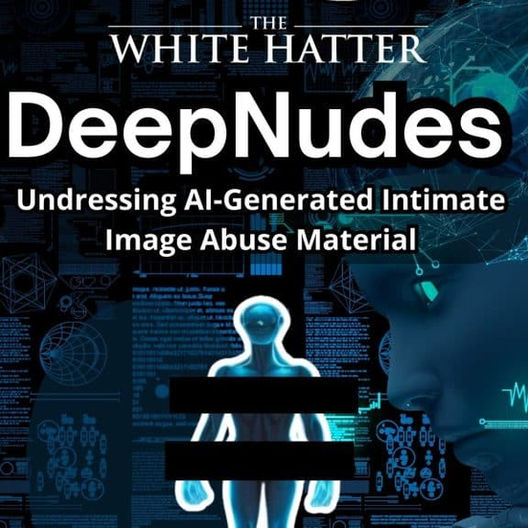So, Here Comes The AI Smart Glasses: Are Schools Ready For This Wearable Technology
- The White Hatter

- Aug 21
- 5 min read

What happens when everyday eyewear doubles as a camera, translator, and AI assistant? Smart glasses are no longer a futuristic concept, they are already on the market, stylish enough to pass for ordinary frames, and powerful enough to transform classrooms. For students, they could mean breakthrough accessibility. For schools, they raise urgent questions about privacy, policy, and even legal rights.
Artificial intelligence governance expert Matthew Wemyss recently raised an important concern, that being smart glasses are no longer futuristic gadgets, they could soon become part of a regular school day. (1) With sleek, modern, and relatively affordable options from Ray-Ban in partnership with Meta, (2), Oakley in partnership with Meta (3), Amazon’s Alexa Smart Glasses (4), Google’s upcoming model (5), and several other companies entering the market, it’s likely these devices will start showing up in classrooms sooner rather than later. The challenge becomes even more complicated when you consider that many of these models can be fitted with prescription lenses. If an eye doctor prescribes them as a medical necessity, it could be challenging for a teacher to reasonably ask a student to take them off?
Smart glasses offer powerful benefits that go far beyond novelty. For English as a Second Language (ESL) students, they can provide real-time translation, helping them follow lessons and join discussions without missing a beat. Children with dyslexia may be able to use text-to-speech features that transform frustrating reading tasks into accessible learning opportunities. Students with visual or sensory challenges could rely on features that convert signs, verbal cues, or written instructions into formats they can more easily understand. For many families, these glasses aren’t luxuries, they could be essential tools that unlock equitable access to education.
However, as with any tool, the same technology that supports learning can also compromise privacy. Smart glasses are capable of silently live streaming classrooms, recording students and teachers without consent, capturing intimate moments such as in a bathroom or change room, used to cheat on tests, and engage in private conversations. Worse, these recordings could be repurposed into harmful AI outputs such as deepfakes. Most current school policies were written with phones and laptops in mind, not wearable cameras disguised as everyday eyewear. (6)
Faced with these risks, it may seem tempting to call for an outright ban. However, history shows that bans rarely hold when technology moves this quickly. Smartphones, social media, and even calculators once sparked similar debates. Each time, blanket prohibitions gave way to more nuanced approaches, because the devices became too integrated into everyday life to ignore.
Smart glasses highlight this reality more clearly (excuse the pun) than ever. If a student needs prescription lenses that also happen to contain smart technology, can a school really enforce a ban without infringing on medical needs?
In cases where a student has a set of prescription smart glasses here in Canada, could the Charter of Rights and Freedoms come into play in cases of equality and accessibility? For example some Canadian lawyers have written:
If a student with a disability requires technology (like assistive devices or learning software) to access education, section 15 of the Charter (equality rights) could support an argument that denying access is discriminatory.
In some circumstances, section 7 (life, liberty, and security of the person) or section 2(b) (freedom of expression) could be raised if access to technology is tied to a student’s ability to participate in learning or express themselves.
Even if a ban is put in place, how would staff realistically enforce it when some smart glasses look indistinguishable from ordinary frames?
If a school sets restrictions, how will staff realistically ensure they are followed? Options might include requiring students to disclose when their glasses have smart features, mandating that recording indicators remain visible, or establishing clear reporting protocols when misuse is suspected. None of these options are perfect, but acknowledging the challenge is the first step toward addressing some of the concerns mentioned in this article.
It is clear that school policy will need more than broad statements. Current digital guidelines were written for phones and laptops, not eyewear that looks indistinguishable from ordinary frames. Schools may need to draft clauses that state explicitly:
Smart glasses may only be used for accessibility purposes verified by a medical professional.
Recording features are strictly prohibited in classrooms, bathrooms, and change rooms.
Students and parents must disclose if glasses have smart capabilities before use in school.
Equally important is involving students themselves in the conversation. They are the ones most affected by both the opportunities and risks. Understanding how students perceive privacy, equity, and trust will not only improve compliance, but also make policies feel less like top-down rules and more like shared community standards.
As the school year approaches, it’s worth considering a few pressing questions such as, “Do school policies currently mention smart glasses at all?”, “Would staff recognize these devices if a student came in wearing them?” and, “Is there space in policy to allow smart glasses to be used for accessibility purposes, while still protecting the privacy of others?”
Updating digital guidelines is an urgent first step. Schools may need to outline where and how wearable technology is permitted, while making it clear that recording in bathrooms, change rooms, or classrooms without permission is prohibited. The real challenge, however, lies in enforcement, how will anyone know if the glasses are recording? That’s where awareness, training, and trust become crucial.
Awareness matters. Teachers should be familiar with what these devices look like and what they can do, while families should be informed partners in the discussion. Most importantly, policies should strike a balance given that banning smart glasses outright risks shutting out students who need them, but ignoring their risks leaves privacy and trust vulnerable.
Smart glasses are no longer “maybe someday” technology. Some are here now, others are just around the corner, and they bring both powerful advantages and serious challenges. Instead of chasing bans that will likely fall behind the speed of innovation, schools, parents, and caregivers may need to concentrate on something more sustainable, such as preparing students and communities to navigate these technologies thoughtfully, safely, and responsibly.
One last thought, earlier this year OpenAI announced that it is developing a new wearable device, predicted to launch late next year. (7) The company claims it could be as disruptive to the market as the original iPhone was when it first appeared. To underscore that point, OpenAI has brought on one of the original iPhone developers to lead the project.
The message here is bigger than one device. Today, it’s smartphones, chromebooks, and AI-powered glasses. After that, who knows? The pace of change is accelerating, and every new product seems to spark debates in schools, workplaces, and families about whether we should ban it or embrace it. However, if we’re honest, simply banning technology often feels like a game of whack-a-mole. A new tool will always be waiting around the corner.
The real question isn’t whether we can stop these devices from entering classrooms or homes, it’s whether we can prepare youth, teens, and adults to live alongside them responsibly. That means shifting the focus from prohibition to education. Instead of fighting the tide, we need to invest in teaching ethical use, critical thinking, and digital literacy so that when the next tech evolution arrives, and it will, we’re ready not with fear, but with the skills to coexist with technology in ways that support both learning and life.
Digital Food For Thought
The White Hatter
Facts Not Fear, Facts Not Emotions, Enlighten Not Frighten, Know Tech Not No Tech
References:














